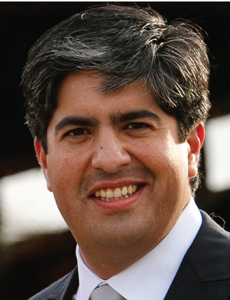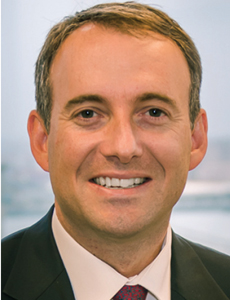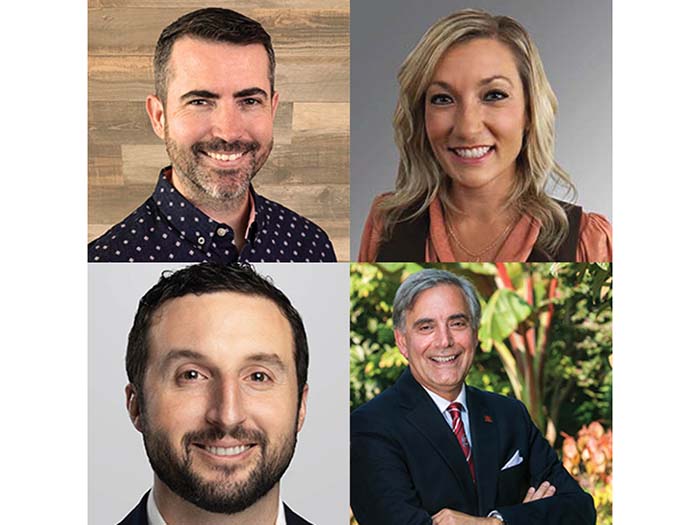Global Claims
A Global Footprint

Varied customs and business practices. Different currencies, languages and regulatory practices. Not to mention trying to coordinate activities in a multitude of different time zones while meeting internal expectations at both the local and corporate level.
There are a host of challenges faced by risk managers when they suffer an international loss. But if they wait until the loss occurs to meet those challenges, it will probably already be too late to effectively respond.
Putting together a team pre-loss to handle claims — including forensic accountants, technical experts and counsel — and forging relationships on the ground with the locally admitted insurance company, adjusters and regulators are key to a smooth process.
Especially in some emerging economies, local business units have little experience with insurance. And in countries where the government has a stake in the insurance industry — such as China, Brazil, Russia and India — adjusting claims can be even more challenging.
All too often, risk managers don’t even anticipate having to adjust claims overseas, said John Dempsey, managing director and global practice leader, Aon Global Risk Consulting.
“For that reason, they more than likely do not have a system in place to effectively deal with it,” he said.
Not so for Jose Heftye, senior director-global risk management at Flextronics in San Jose, Calif., who has three main objectives when it comes to handling international claims: quantify the loss, maximize the coverage and minimize the recovery time.
It sounds straightforward, but often, it is anything but.
Resolving international claims often means dealing with multiple insurance carriers on a single claim; making sure the company is in compliance with the increasing number of countries that require local policies; and understanding what resources are available from employees, consultants, brokers, adjusters and carriers.
“To get to a successful outcome, you have multiple factors that will influence that outcome,” said Heftye, who joined Flextronics, an electronics design and manufacturing company, last year after working mostly in the food and beverage industry.
“If you don’t do pre-loss work to prepare in case of a claim, then you are in the fire trying to put together a team that will help to quantify the loss and identify the key items in your insurance policy to trigger coverage,” he said.
“I think the biggest mistake I have done is to send raw data to the insurance company without telling a story. If you take raw data and just send it to them and let them put together a story on your behalf, then it’s very difficult to turn that ship. … I am the one who should be articulating what happened and using the numbers to back it up.”
It’s also necessary to keep perspective, he said. Too many risk managers “always try to push the number,” instead of seeking a reasonable, speedy conclusion to the claim in a way that maintains good relations with the primary carrier.
“The main thing for the risk manager to do,” Dempsey said, “is to set objectives and then put in place the people who can carry out those objectives.
“The very first thing is to understand where we are going with the claim and what do we want to achieve at the end of this process. You would be surprised at how many objectives there may be. Some are financial. Some are organizational. Some don’t want to deal with it at all.”
Because of time differences and the complexities, some risk managers let overseas claims languish.
“If a $5 million claim is settled within six months, that transaction is a lot more valuable to the organization than a $5 million claim that takes two years to settle.” — John Dempsey, Aon Global Risk Consulting.
“If it takes too long to settle or the claim is not adequately resolved, the value of insurance is not as great as it could be as when the process is managed more effectively,” Dempsey said. “If a $5 million claim is settled within six months, that transaction is a lot more valuable to the organization than a $5 million claim that takes two years to settle.”
Loss Determinations
Quantifying the loss itself can be a struggle.
After the Thailand flooding in 2011, a packaging company client of one of Heftye’s prior employers could not get raw materials from its supplier because that company had been affected by the flooding. Without raw materials, the client halted production, and with production halted, the client stopped buying from Heftye’s company.
“Without having any locations in Thailand, I was losing income. These are the types of things you don’t think about,” he said. “How do you convince an insurance company that you are losing money because the supplier of your client is not operating?”
Of course, Heftye did just that. But it involved traveling to Thailand, dealing with the local fronting insurance carrier — which was overwhelmed by all of the losses in the country and did not have any resources to adjust the claim — as well as bringing in his own team, including a forensic accountant, engineer and counsel; and working with brokers and multiple insurers on the claim: All of them based in different time zones.
“This was a situation where I was adjusting my own claim,” he said. “It took us almost a year. It takes a long, long time to capture all of the information and put it together and understand the different variables.”
For all of the time zones involved, however, it’s best to view international claims in the same lens as domestic ones, said Gerry Alonso, senior vice president and manager of claims at FM Global.
“The process should deliver fair, prompt and equitable service. If you look at the risk manager, the CFO, they are buying a program of insurance and their experience should be no different than if the loss happens in Bangkok, Buenos Aires or Baton Rouge,” he said.
“I believe it is critical to have boots on the ground that know the jurisdiction and local customs.” – Gerry Alonso, senior vice president and manager of claims at FM Global.
Echoing Heftye, Alonso pointed to the importance of establishing relationships with the adjusters, carriers and regulators at the site of the claim prior to a claim occurring.
“I believe it is critical to have boots on the ground that know the jurisdiction and local customs,” he said, such as understanding the etiquette of presenting a business card in Japan or knowing that Sundays are revered in Spain and that work rarely occurs.
“At the same time,” Alonso said, “you are an organization that has promised the client consistent treatment irrespective of what country in the world that loss occurred, and you have to meld both of that together.”
FM Global’s claims team numbers about 300 people, who, in total, speak 21 different languages, he said. In 2010-2011, the carrier paid losses on 34 natural catastrophes, 11 of which were outside of North America. Of the 2,500 claims outside of North America, “we had zero that ended up in litigation,” Alonso said.
In Chile, for example, FM Global was able to settle 99 percent of losses due to the earthquake there in less than a year, and many were in excess of $10 million, he said.
Behavioral issues present another challenge.
“The cultural mores and norms [in some countries] may not be as assertive as they could be in debating issues that could arise in the claim,” Aon’s Dempsey said. “Oftentimes, they simply follow the advice of the insurance carrier, which may or may not be correct. Sometimes, the settlements are fine but you often take your chances in these things.”
Consistent Processes
Putting the right people in place is a crucial task for carriers as well.
“You have got to ensure you hire the right talent,” said Colm Singleton, head of international claims at Allied World.
“There’s a risk that carriers overlook the importance of local claims knowledge. You have got to meet the people you are going to hire, whether that means flying over to the region or having them come to you.”
To prevent regional differences popping up in the claims process, insurers should use peer audits and key performance indicators to ensure consistency, he said.
In the EU, for example, companies are dealing with a significant increase in cross-border litigation and regulatory exposures that mirror class-action lawsuits in the United States.
The claims team is able to partner with others in the network to draw on their experience, he said.
Technology is also crucial to support an effective claims process, including electronic claims filing and a system that easily configures to new lines and products, he said.
That improves customer service, enables a faster response time and enhances results.
“I am a big believer that a negative claims experience is a top reason a client will not renew with their insurer,” he said.
At ESIS Inc., the TPA spent two years planning and developing a global claims platform designed to give clients the same service internationally as domestically, said David Patterson, president of ESIS, a wholly owned subsidiary of the ACE Group.
The platform, which went live last fall, is structured around 12 hubs that service the globe and report into ESIS. Before the restructuring, ESIS had a global network of organizations their London-based team would call on.
Now, it has ESIS-branded operations with staff around the world who are knowledgeable of local customs and regulations but have also been trained on ESIS’ processes and protocols.
“To try to get a good handle on [global differences] and be able to manage it consistently while still being respectful and in compliance with local customs is always a challenge,” Patterson said.
Knowledge of customs and technical expertise is mandatory, FM Global’s Alonso said. But his company’s training program also places a heavy emphasis on soft skills.
“At the end of the day, you could be the sharpest adjuster, the most competent, but if you are unable to articulate and empathize with the client, it’s really all for naught,” he said.












